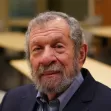The Daily Source of Urban Planning News
After Several Delays, NYC Bike Share Begins
Memorial Day has been honored in America for 150 years, but you might excuse New Yorkers for celebrating an entirely different holiday yesterday - the long-waited launch of the country's largest bike-share program.
BLOG POST
The Technology Enhanced City
Explore how people across the world are working to develop technology enhanced solutions to challenges facing their cities.
Lighting Designers Project a Bright Future for Our Cities
Utilizing new approaches and new technologies for illuminating the built environment, lighting designers are helping to create safer, more dynamic, and more accessible cities.
Does Public Housing Need an Ad Campaign?
Perceptions of public housing are contradictory. Most approve of it for their communities, but most don't want to live near it. A new public relations initiative seeks to educate the general public on the benefits of public housing to everyone.
Atlanta Embraces Big Data
An app for locating discarded tires and a program to map the condition of the city's sidewalks are two examples of local initiatives aimed at improving Atlanta's environment. With the Mayor's embrace, the city is trying to catch up to tech trends.

The Ten American Cities Most At Risk from Climate Change
Grist has compiled a list of the ten U.S. cities most likely to be affected by climate change.
What Happens When Student Renters Crowd Out Homeowners?
The growing imbalance of student housing and single family homeowners in the Oakland neighborhood of Pittsburgh is affecting the surrounding community. A new master plan seeks to maintain a healthy equilibrium between the housing options.
Prefab is Having a Moment; Can it Sustain the Momentum?
With a modular high-rise planned for Brooklyn, a modular design winning Manhattan's micro-unit apartment competition, and several other prefabricated buildings on the drawing board throughout the U.S., prefab is getting a relook.
Data Centers: The Next Trend in Adaptive Reuse?
Sears is planning to convert a number of its shuttered buildings into data centers. Could this become a trend for the reuse of vacant buildings nationwide?
Pittsburgh Poised to Elect Progressive Urbanist as Mayor
With promises of creating a strong planning department, increasing bicycle mode share, and focusing development around transit, Bill Peduto won Pittsburgh's Democratic mayoral primary this past week. His win is being hailed by urbanists nationwide.
Urban Ruins and the High Line Next Door
Chuck Wolfe suggests we all have the inspiration within us to envision how to remake our cities--from the conjecture of a Seattle restauranteur about Seattle's monorail to neighborhood examples of "we used this before, let's use it again".
The Future of Vertical Urban Farming is Pink
Let's put aside those renderings of high-rise urban greenhouses with lush, vertical gardens. Vertical farming's future, instead, lies more practically in large, suburban "pinkhouses", says one expert.
BLOG POST
Are Transportation Planning Reforms Coercive?
Changing demands justify policies and programs that encourage people too choose efficient travel options and smart growth locations. Are these coercive?

The Geography of America’s Industrial Renaissance
After a sharp decline during the recession, an industrial expansion is helping to drive job growth in many of America’s metropolitan areas. New analysis outlines the country’s best manufacturing ‘storylines’.
America’s Top Arrested Developments, In Honor of Sunday's Season 4 Premiere
After a seven-year hiatus, Netflix is bringing back the critically acclaimed television series Arrested Development, and with it memories of the Great Recession.
Forgotten Freight Demands Frighten Transportation Planners
While much of the current discussion in planning centers on decreasing road capacity to promote greater pedestrian mobility, Eric Jaffe wonders if we are thinking enough about the critical and complex task of moving freight.
To Pop or Not? Hirshhorn 'Bubble' Puts Museum at a Crossroads
Designed by Diller Scofidio & Renfro, the Hirshhorn "Bubble" would cost $12.5 million and operate two months out of the year, creating performance and additional gallery space for the museum on the National Mall. If it actually gets built, that is.
Government Report Blames City Officials and Factory Owner in Dhaka Collapse
Less than 24 hours after a structural engineer deemed the building unsafe, Sohel Rana ordered garment workers back on the job.
Friday Funny: Pining for the Good Old Days of 'Slight' Gentrification
Do you treasure the good old days of $6 drafts, fancy drinks in Mason Jars, and less-snazzy Starbucks? Than you'll sympathize with Dan Hopper, who laments the changes to his neighborhood as 'slightly richer people' move in.
Applying the Brakes to the Streetcar Revival
With Los Angeles, Charlotte, Washington D.C. and many more cities hoping on board, seats are filling up quickly on America's streetcar bandwagon. However, experts caution gung ho cities about unreal expectations for improving mobility.
Pagination
City of Fort Worth
planning NEXT
Mpact (founded as Rail~Volution)
City of Camden Redevelopment Agency
City of Astoria
City of Portland
City of Laramie
Urban Design for Planners 1: Software Tools
This six-course series explores essential urban design concepts using open source software and equips planners with the tools they need to participate fully in the urban design process.
Planning for Universal Design
Learn the tools for implementing Universal Design in planning regulations.


































